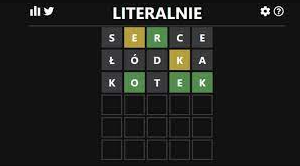Gold has been esteemed globally for its intrinsic value and aesthetic appeal, serving as a symbol of wealth and stability across centuries. In India, gold holds a special place in cultural and economic fabric, transcending mere monetary value. In cities like Rajkot, the fluctuating gold rates catch the attention of both seasoned investors and average consumers. While the “gold rate today Rajkot” trends remain significant for local residents, it is intriguing to notice its differences from other cities across the country. This article aims to explore various factors that contribute to the distinct gold rates in Rajkot, while also examining secondary factors influencing gold pricing on a broader scale.
Regional Differences in Gold Rates
Economic Environment
One key aspect influencing the gold rate today in Rajkot is the local economic environment. Rajkot, a prominent city in Gujarat, is well-known for its vibrant culture and thriving economy. Unlike metropolitan urban centers, Rajkot’s economy is largely driven by local businesses, trade, and agricultural produce. This relatively lower scale of operations can affect liquidity in the local market, influencing the willingness of traders to buy gold at prevalent rates requiring adjusting premiums based on the current demand dynamics.
Local Demand and Consumer Behavior
The demand for gold in Rajkot is also heavily influenced by local consumer behavior and cultural norms. Gold plays a central role in various activities, from weddings and festivals to investing for security. Rajkot’s population shows substantial propensity to invest in gold, causing notable shifts in prices due to high demand seasons. For example, festival periods often see an increase in demand, causing gold rates to spike locally. These variations are observed in different cities based on similar regional demand factors, such as Jaipur, where the “22 carat gold price in Jaipur today” might differ due to varying demand levels and economic conditions.
Transportation and Commodities Cost
Transport costs contribute significantly to the regional differences in gold rates. Relatively isolated cities or those without highly developed infrastructure might face increased costs in transporting goods. Rajkot’s transportation and logistics network, while effective, might incur higher expenses during times of congestion or fuel price hikes, subsequently affecting the local gold rate.
Conversely, well-connected cities with efficient networks can maintain lower costs for gold movement, facilitating better rates for end consumers. In a city like Jaipur, where the “22 carat gold price in Jaipur today” could be evaluated, transport and logistics costs might differ based on local transportation efficiency.
Regulatory and Taxation Policies
Government regulations and policies also play a substantial role in determining gold rates in Rajkot. Taxation policies, state-specific levies, and additional charges can cause disparities in gold prices across different cities. For instance, if the local government imposes higher sales tax or duty on gold transactions, this can drive gold prices up in Rajkot compared to other cities where such levies might not be as pronounced.
The presence of other financial intermediaries or regional economic policies can also influence pricing. Areas with robust financial systems might see more stable rates with fewer price spikes and trend anomalies.
Global Influences
The global market inherently affects gold pricing in local cities. Recognizing its value as a hedge against inflation and global economic instability, shifts in international currencies, geopolitical events, and global demand-supply dynamics can directly affect gold pricing everywhere, including Rajkot.
For instance, when international markets encounter economic destabilization, the tendency to invest more in tangible assets like gold can cause a surge in demand and subsequently, an increase in price. Such global effects reflect within local markets since traders in Rajkot must stay competitive with international standards.
Local Market Conditions and Dealer Networks
An overlooked yet crucial element is the local market conditions and dealer networks. The structure and size of dealer networks within Rajkot can influence competition levels and, therefore, pricing. More competitive dealer networks might offer better rates, while limited networks might maintain higher wages due to reduced competition.
Additionally, strategic decisions made by these dealers concerning procurement and sales strategies can appear inconspicuously yet significantly, affecting daily gold rates depending on the local market conditions. Hence, the observed differences in the “gold rate today Rajkot” transcend more than just consumer demand and encompass broader, strategic business decisions by local traders.
Conclusion
The nuances contributing to varying gold rates in Rajkot compared to other cities spotlight the complex interplay between local, national, and global factors. From regional demand and economic profile to transport logistics, government policies, dealer strategies, and global economic trends, the factors influencing the “gold rate today Rajkot” are vast and intricate.
For consumers interested in specific gold rate trends, such as the “22 carat gold price in Jaipur today,” understanding these influences can aid in making informed decisions and optimizing their investment and purchasing strategies.
While the allure of gold is perennial, knowing the dynamic nature of factors affecting its price instills a more profound appreciation for this timeless asset. As different cities continue to experience their unique gold pricing phenomena, stakeholders—from consumers to traders—remain ever engaged in deciphering this valuable commodity’s intricate pricing matrix.


















